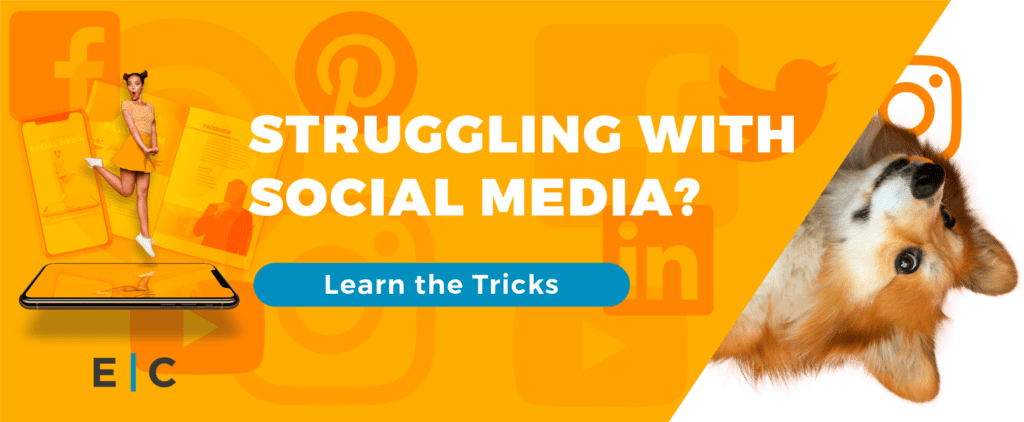Finding a list of social media best practices is simple. Just enter “social media best practices” into Google and you’ll be swamped with a variety of blog posts on the topic. Fortunately, our team has developed the best guide to social media best practices you’ll find on the web. While it’s easy to find answers to this, it’s not quite as common to find a list of best practices you need to avoid.
Don’t worry, I’ve come up with a quick list of the five most damaging social media best practices.
Horrible Social Media Best Practices
These so-called best practices you’re about to check out seem harmless enough at first glance but can cause serious headaches for your social media strategy in the long-run.
Here are five of the worst social media best practices you need to avoid:
1. Automatic posting
2. Be humorous
3. Hijack trending topics
4. Ignore critics and bad reviews
5. Be active on all the major platforms
1. Automatic Posting
The obvious benefit of social media automation is how easy it is. It cuts down on the time you spend individually posting to each social media platform and even allows you to bulk schedule your content.
Here’s the downside; most people try to schedule too far in advance. A key to successful social media posting is being relevant and timely. If your posts are scheduled 3 months in advance, you won’t be capitalizing on last-minute industry news, trends and events. Try keeping your scheduling to 1 week in advance and see how your engagement is affected.
2. Be Humorous
Everyone loves good humor. It’s funny, engaging and entertaining. Unfortunately, humor is also semi-dangerous territory on social media. Many brands have gone down in a blaze of resentment thanks to poorly timed humorous posts.
The best thing you can do for your social media profiles is align your shared humor with the perception of your brand. A liquor brand that’s targeting millennials can get away with making jokes about bad hangovers, but an upscale Italian restaurant can’t. Know your brand and you’ll know what your audience wants to see on social media.
3. Hijack Trending Topics
There’s a time and a place to jump on board with trending topics, but tread carefully. Not all topics are appropriate fodder for your social media accounts. Your basic rule of thumb is this; use common sense.
If there’s a shooting at a movie theater, don’t tweet out, “Good morning shooters!” If diversity is trending at the Oscars, don’t mistakenly call-out Whoopi Goldberg as Oprah. In case you’re wondering, both of those actually happened.
Using common sense is all it takes to stay in the safety zone. Do a quick online search to learn about a trending topic before posting anything. If it relates to your brand or your target audience, chances are you’ll be able to use it.
4. Ignore Critics and Bad Reviews
Did you happen to catch Cracker Barrel’s well-publicized social media crisis back in March? It’s the perfect example of what can happen when you ignore negative engagement. Getting harsh or even troll-ish comments on your company Facebook page certainly isn’t fun, but it’s essential that you address the issue.
You have 3 options:
1. Address the negative engagement and potentially turn a bad situation into a positive experience
2. Hide the bad comment so that only the commenter and their connections can see it
3. Ignore the issue
Ignoring the issue usually makes the situation worse. People who are already upset with your company will want others to know they’re dissatisfied. Addressing them professionally gives you the opportunity to establish credibility and demonstrate your commitment to creating a great experience.
5. Be Active on All the Major Platforms
Too many brands think they need to be active on every major social media platform. That’s a bad idea. If you’re spread across 6 different accounts you can’t properly devote your time to creating a stellar presence on the platforms that really matter.
If you’re a small business, choose the top 2 or 3 sites where your core audience spends time and ignore the rest. If you’re a medium or large size organization with greater resources and the ability to delegate responsibilities, go ahead and add some additional platforms, so long as they make sense for your brand.
The key to benefiting from social media best practices is to understand the limits and abilities of your workforce. It’s better to have low engagement and slow growth from a qualified audience than it is to have exceptional growth and high engagement from an unqualified audience.
Your social media represents part of your company. A very public part. Use it attract potential customers and drive them to your website with the purpose of nurturing a relationship. A well-nurtured relationship has the potential to turn into a paying customer down the road and at the end of the day, revenue speaks the loudest.

-FINAL(01-00)-White&Blue-01.svg)




